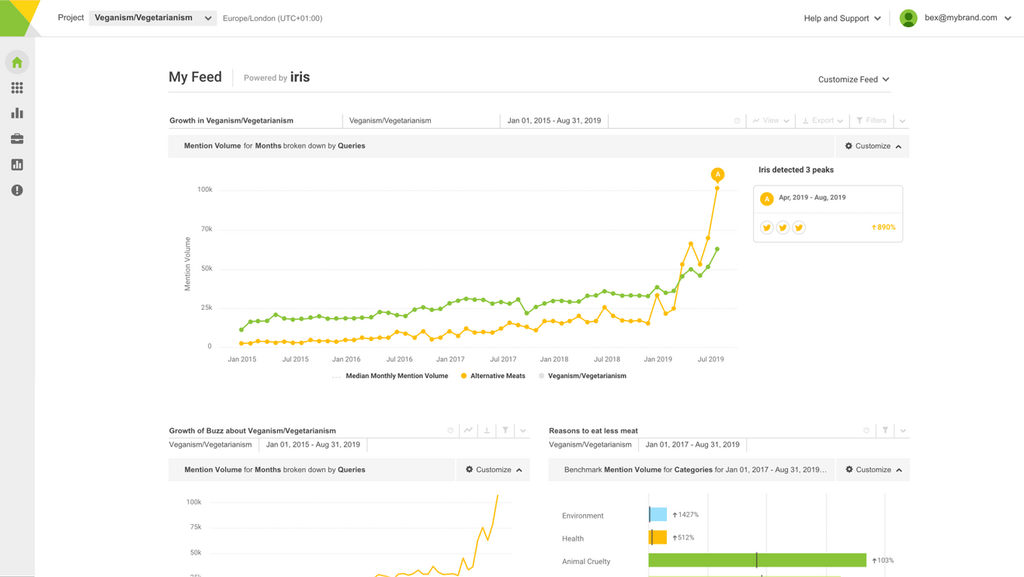While focus groups and online social surveys might feel old-school, blending them with social media data is possible.
For example, if you're still using more formal, offline market research methods, you could combine these with Facebook Polls, LinkedIn surveys, and interactive Instagram Stories.
When doing so, a good way to gather quantitative data quickly is by asking multiple-choice or rating-scale questions.
For qualitative data, you could suggest that social media users leave a comment instead, giving you customer feedback in the customers’ own words.
Both methods will give you immediate user-generated content you can analyze for patterns and themes.
To take it one step further, you could even blend your social poll results with ongoing social listening to get some holistic data about how your audience interacts with your brand over time.
4. Data analytics and natural language processing
Thanks to the evolution of data analytics and natural language processing, it's possible to dive deeper than ever into unstructured text and visuals.
This powerful combination can reveal the nuance behind online chatter. It means counting how many times your brand is mentioned, capturing the emotion behind each mention, and determining the broad topics that keep surfacing.
You've got two methods to choose from here – text analytics and visual analytics.
Text analytics is all about examining customer comments, product reviews, and share-of-voice metrics, then categorizing these mentions into positive, negative, or neutral to form a clear customer sentiment index.
Visual analytics, on the other hand, uses advanced tools to identify your brand’s logo in user images, video content, and memes. This approach extends beyond text-based research to uncover brand presence in less obvious contexts.
These technologies can give you a pretty comprehensive view of who’s talking about your brand, how frequently, and in what context – all in real time. They can also give some insight into trending topics or pick up on suggestions for new features so your research and development or marketing teams know where to focus next.
In this example, Brandwatch’s Image Insights detected the Red Bull logo in a viral race day moment, showing how the brand appeared in social media conversations.



